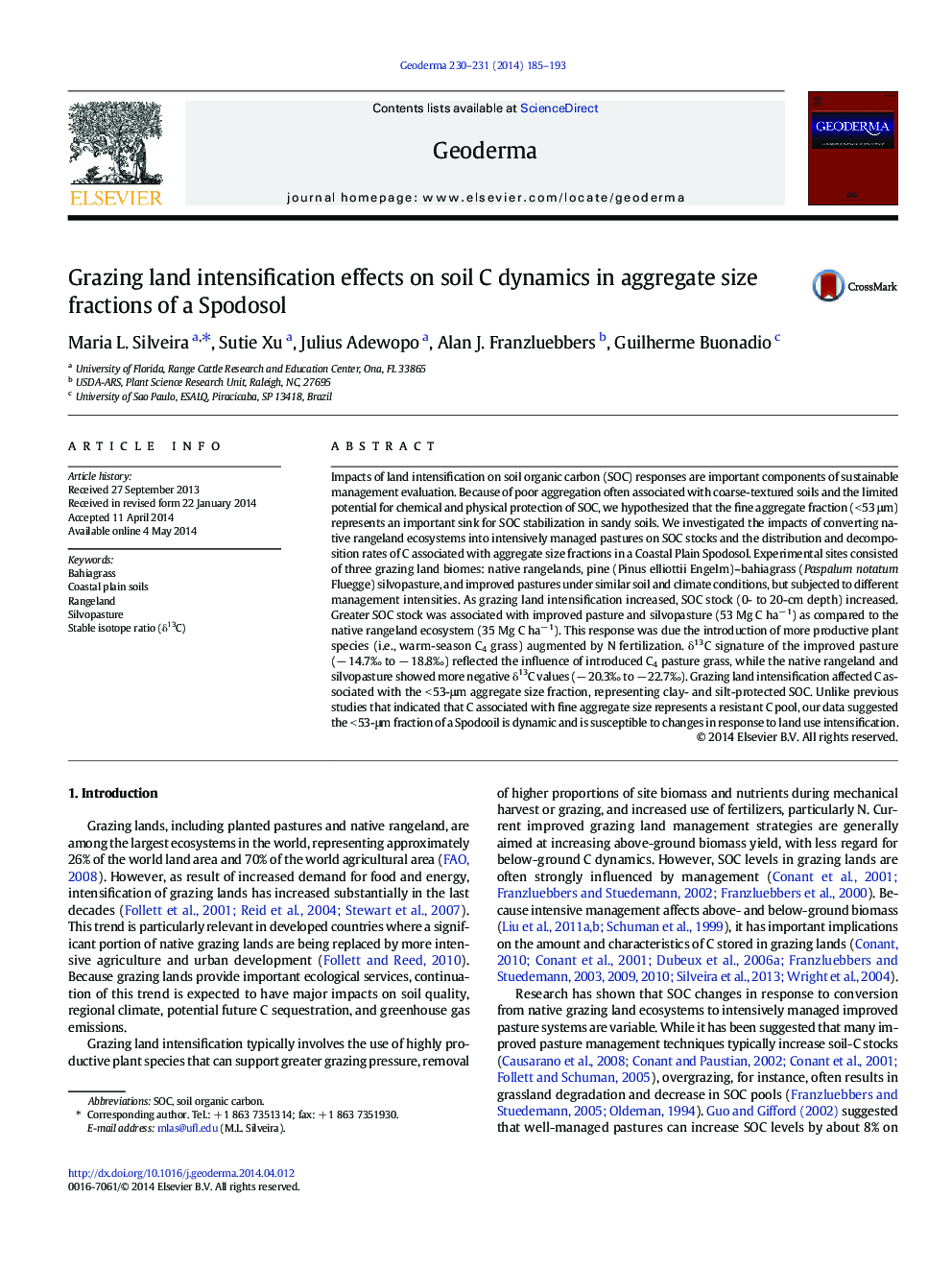| Article ID | Journal | Published Year | Pages | File Type |
|---|---|---|---|---|
| 4573244 | Geoderma | 2014 | 9 Pages |
•Grazing land intensification can promote soil carbon accumulation.•Carbon associated with the fine aggregate size fraction of sandy soils is dynamic.•Soil C in intensively managed pastures can be more labile than in native systems.
Impacts of land intensification on soil organic carbon (SOC) responses are important components of sustainable management evaluation. Because of poor aggregation often associated with coarse-textured soils and the limited potential for chemical and physical protection of SOC, we hypothesized that the fine aggregate fraction (< 53 μm) represents an important sink for SOC stabilization in sandy soils. We investigated the impacts of converting native rangeland ecosystems into intensively managed pastures on SOC stocks and the distribution and decomposition rates of C associated with aggregate size fractions in a Coastal Plain Spodosol. Experimental sites consisted of three grazing land biomes: native rangelands, pine (Pinus elliottii Engelm)–bahiagrass (Paspalum notatum Fluegge) silvopasture, and improved pastures under similar soil and climate conditions, but subjected to different management intensities. As grazing land intensification increased, SOC stock (0- to 20-cm depth) increased. Greater SOC stock was associated with improved pasture and silvopasture (53 Mg C ha− 1) as compared to the native rangeland ecosystem (35 Mg C ha− 1). This response was due the introduction of more productive plant species (i.e., warm-season C4 grass) augmented by N fertilization. δ13C signature of the improved pasture (− 14.7‰ to − 18.8‰) reflected the influence of introduced C4 pasture grass, while the native rangeland and silvopasture showed more negative δ13C values (− 20.3‰ to − 22.7‰). Grazing land intensification affected C associated with the < 53-μm aggregate size fraction, representing clay- and silt-protected SOC. Unlike previous studies that indicated that C associated with fine aggregate size represents a resistant C pool, our data suggested the < 53-μm fraction of a Spodooil is dynamic and is susceptible to changes in response to land use intensification.
